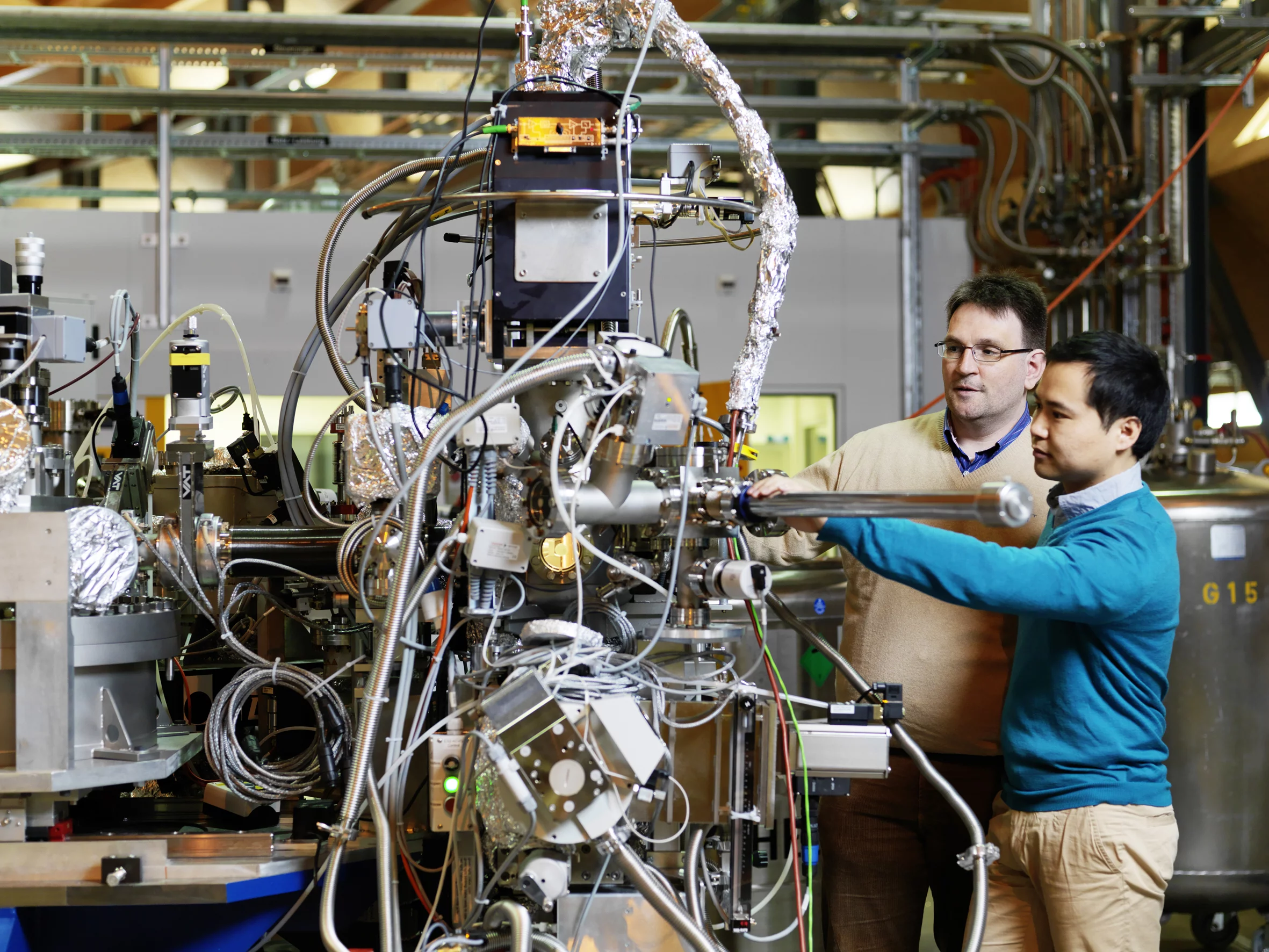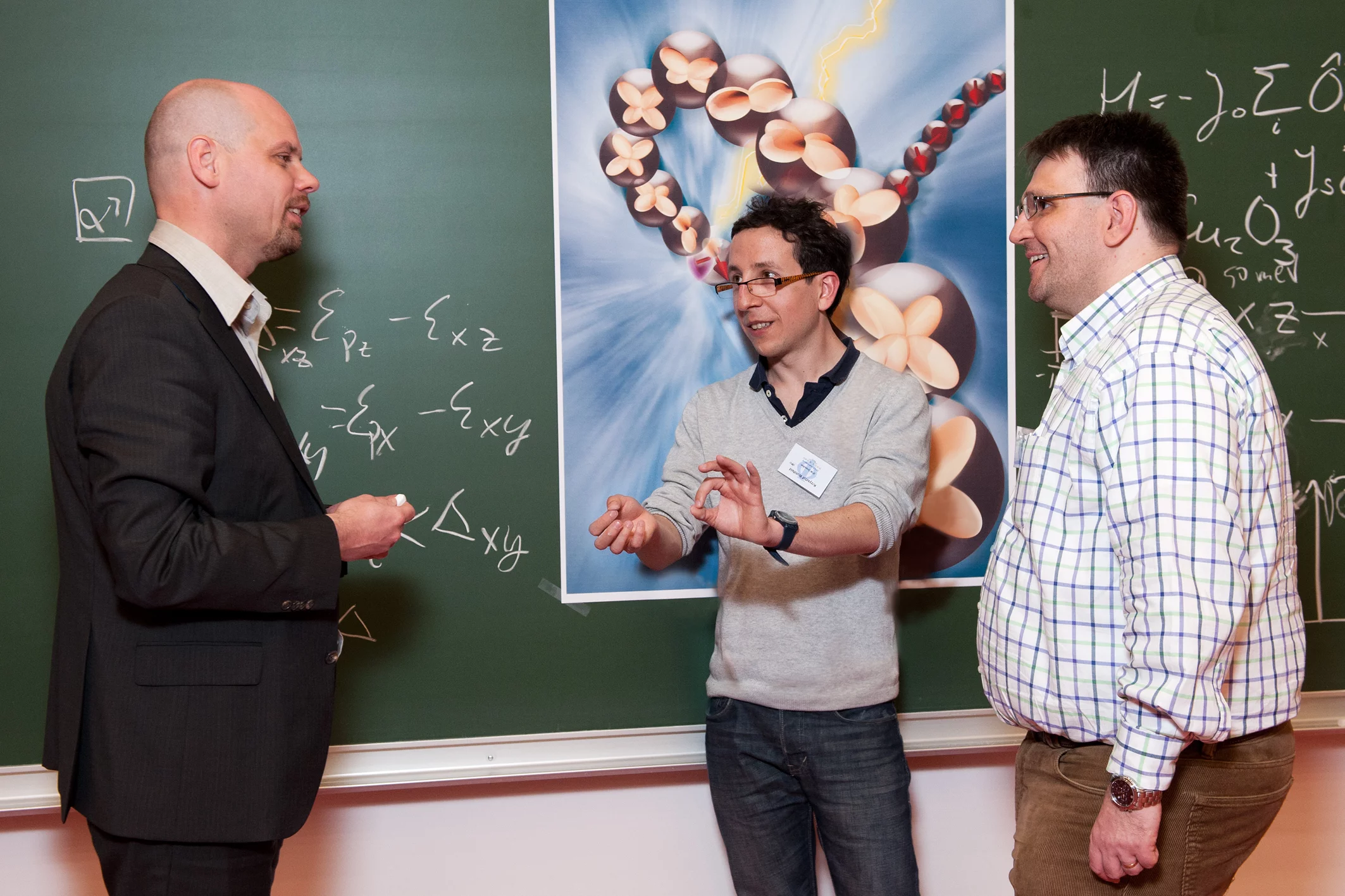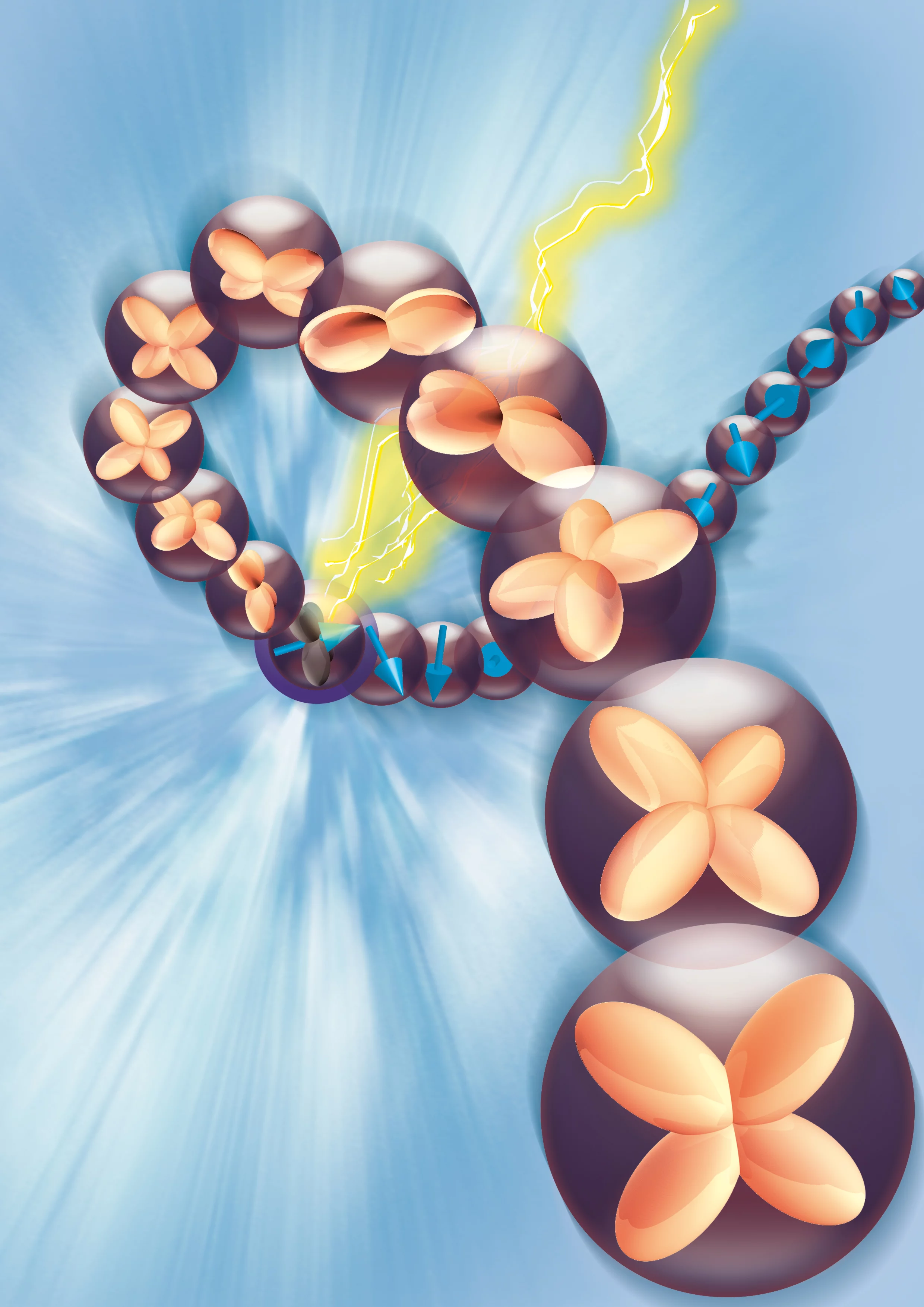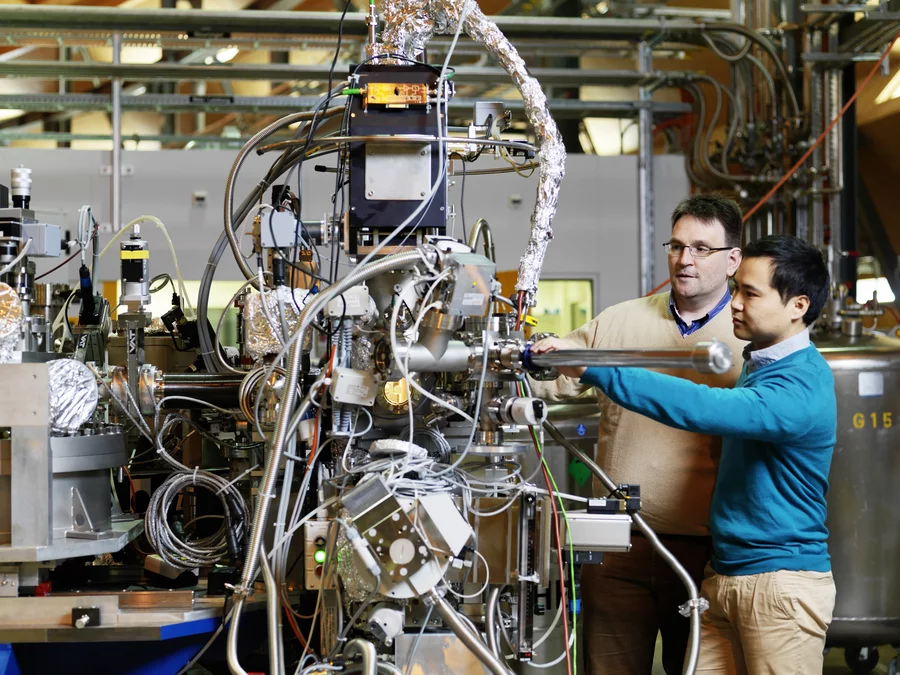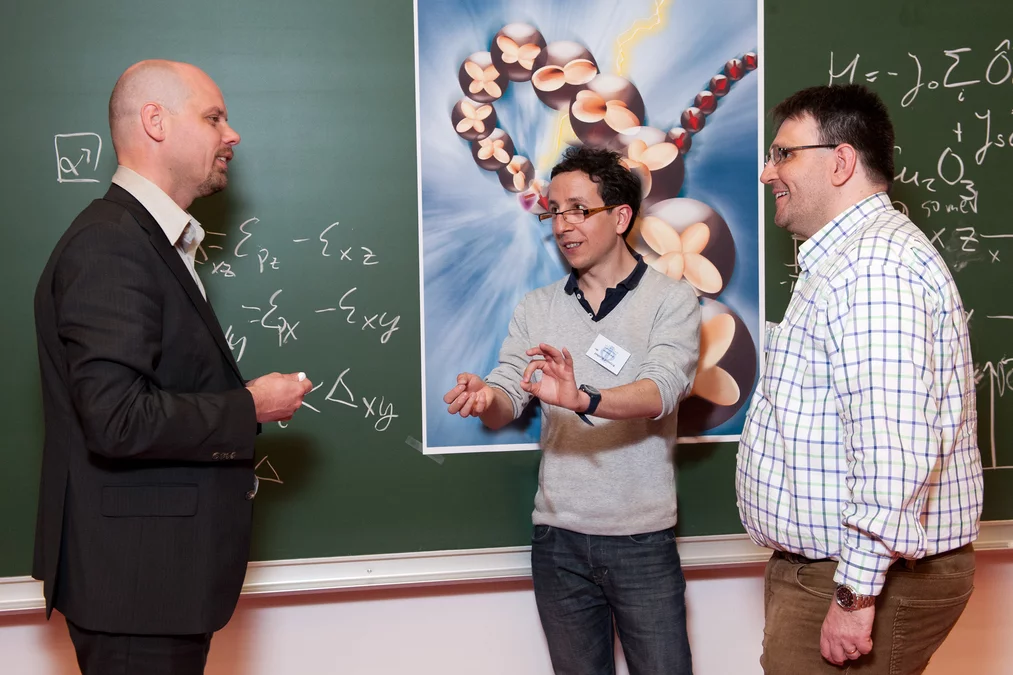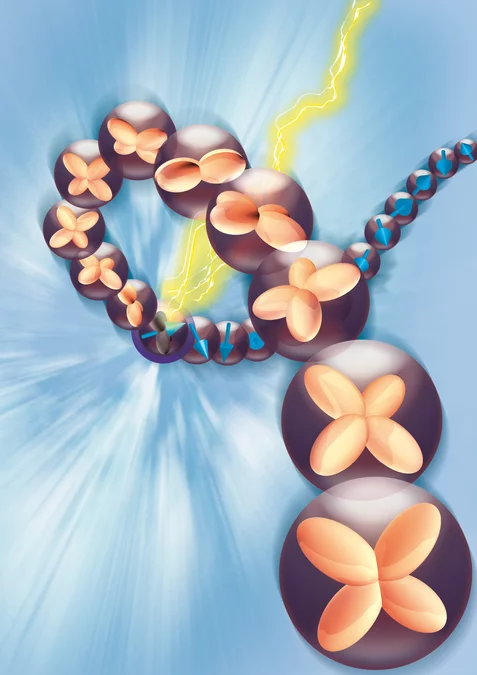An electron has been observed to decay into two separate parts, each carrying a particular property of the electron: a spinon carrying its spin – the property making the electron behave as a tiny compass needle – and an orbiton carrying its orbital moment – which arises from the electron’s motion around the nucleus. These newly created particles, however, cannot leave the material in which they have been produced. This result is reported in a paper published in Nature by an international team of researchers led by experimental physicists from the Paul Scherrer Institute (Switzerland) and theoretical physicists from the IFW Dresden (Germany).
All electrons have a property called spin
, which can be viewed as the presence of tiny magnets at the atomic scale and which thereby gives rise to the magnetism of materials. In addition to this, electrons orbit around the atomic nuclei along certain paths, the so-called electronic orbitals
. Usually, both of these quantum physical properties (spin and orbital) are attached to each particular electron. In an experiment performed at the Paul Scherrer Institute, these properties have now been separated.
X-rays split the electron into a spinon and an orbiton
The electron's break-up into two new particles has been gleaned from measurements on the copper-oxide compound Sr2CuO3. This material has the distinguishing feature that the particles in it are constrained to move only in one direction, either forwards or backwards. Using X-rays, scientists have lifted some of the electrons belonging to the copper atoms in Sr2CuO3 to orbitals of higher energy, corresponding to motion of the electron around the nucleus with higher velocity. After this stimulation with X-rays, the electrons split into two parts. One of the new particles created, the spinon, carries the electron’s spin and the other, the orbiton, the increased orbital energy. In this study, the fundamental spin and orbital moments have been observed, for the first time, to separate from each other.
In the experiment, X-rays from the Swiss Light Source (SLS) are fired at Sr2CuO3. By comparing the properties (energy and momentum) of the X-rays before and after the collision with the material, the properties of the newly produced particles can be traced. "These experiments not only require very intense X-rays, with an extremely well-defined energy, to have an effect on the electrons of the copper atoms", says Thorsten Schmitt, head of the experimental team, "but also extremely high-precision X-ray detectors. In this respect, the SLS at the Paul Scherrer Institute is leading the world at the moment. "
Electron splitting to be found in many materials
It had been known for some time that, in particular materials, an electron can in principle be split
, says Jeroen van den Brink, who leads the theory team at the IFW Dresden, but until now the empirical evidence for this separation into independent spinons and orbitons was lacking. Now that we know where exactly to look for them, we are bound to find these new particles in many more materials.
Results may help to understand high-temperature superconductivity
Observation of the electron splitting apart may also have important implications for another current research field – that of high-temperature superconductivity. Due to the similarities in the behaviour of electrons in Sr2CuO3 and in copper-based superconductors, understanding the way electrons decay into other types of particles in these systems might offer new pathways towards improving our theoretical understanding of high-temperature superconductivity.
About PSI
The Paul Scherrer Institute develops, builds and operates large, complex research facilities, and makes them available to the national and international research community. The Institute's own key research priorities are in the investigation of matter and material, energy and the environment, and human health. PSI is Switzerland's largest research institution, with 1400 members of staff and an annual budget of approximately 300 million CHF.
ABOUT IFW DRESDEN
The Leibniz Institute for Solid State and Materials Research in Dresden (German: Leibniz-Institut für Festkörper- und Werkstoffforschung Dresden) – in short, the IFW Dresden – is a non-university research institute and a member of the Gottfried Wilhelm Leibniz Scientific Community. It is concerned with modern materials science and combines explorative research in physics, chemistry and materials science with the technological development of new materials and products. The IFW Dresden has about 400 employees, of whom 190 are scientists, mostly physicists, chemists and materials engineers. The annual budget of 23 million Euros is supplied by the Federal Government and the Free State of Saxony in equal proportions. In addition to institutional funding, the IFW Dresden receives project funding of about 5 million Euros per year.
Contact
Dr. Thorsten Schmitt (experimentation)Laboratory for Condensed Matter, Research Department Synchrotron Radiation and Nanotechnology,
Paul Scherrer Institute, 5232 Villigen PSI, Switzerland;
Tel: +41 56 310 37 62, E-Mail: thorsten.schmitt@psi.ch
http://www.psi.ch/sls/adress/
Prof. Dr. Jeroen van den Brink (theory)
Institute for Theoretical Solid State Physics,
IFW Dresden, Helmholtzstrasse 20, 01069 Dresden, Germany;
Tel: +49/(0)351/4659-400, E-Mail: j.van.den.brink@ifw-dresden.de
http://www.ifw-dresden.de/institutes/itf/members/jvdb1
Original Publication
Spin-Orbital Separation in the quasi 1D Mott-insulator Sr2CuO3J. Schlappa, K. Wohlfeld, K. J. Zhou, M. Mourigal, M. W. Haverkort, V. N. Strocov, L. Hozoi, C. Monney, S. Nishimoto, S. Singh, A. Revcolevschi, J.-S. Caux, L. Patthey, H. M. Rønnow, J. van den Brink, and T. Schmitt;
Nature Advance Online Publication, 18.04.2012, DOI: 10.1038/nature10974

